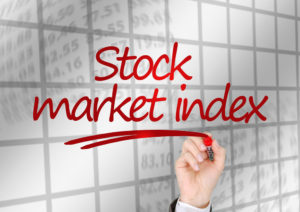The Great Debate Continues: Active vs. Passive

In sports, music, and politics, there are “great debates” that never seem to conclude. In the investment world, one great debate asks a thought-provoking question: which investment approach is better – Active or passive?
Equally intelligent, educated people can take distinctly opposite sides in this discussion, which may mean no definitive answer exists.
Passive pointers. The case for passive investment management is anchored in the evidence that the preponderance of money managers has failed consistently to beat their comparative index. Why is this? Adherents of passive investing cite two primary reasons:
One, markets are efficient, and all known information is already reflected in the price of the stock, making it difficult for managers to find companies that are expected to outperform. Over the 15 years ending in 2017, more than 90% of small-cap, mid-cap, and large-cap asset managers of active equity funds failed to beat their benchmarks. Some did for a particular year, but across successive market years, their ranks quickly thinned.[i],[ii]
Two, actively managed equity funds often have an elevated expense ratio. That presents a hurdle, which can make it hard to match or exceed the return of a low-expense index fund. In 2017, actively managed funds had an expense ratio averaging 0.79%, according to the Investment Company Institute (ICI), compared to 0.09% for the average equity index fund.2,[iii]
Even so, a studious investor has to decide if the potential cost savings of a passive investing approach outweigh the possible opportunity cost.
Active arguments. Active investment managers counter that while the markets may be generally efficient, there are windows of inefficiency created by the time it takes for information to be properly reflected in a stock’s price.
Active managers further argue that performance is not just about relative return, but also, about managing risk. Since the performance of an actively managed account or fund is not tracked to an index, that freedom allows the manager more leeway and options to hedge or reduce exposure to disappointing sectors of the market.
Unlock the combination. Ultimately, the active vs. passive decision comes down to preference. Do you prefer the approach taken by index funds or the strategy behind active management? For some, the combination of both methods represents a strategy that takes no sides but seeks to tap into the distinctive potential benefits of each method. Some investors choose to have a portion of their invested assets actively managed and another passively managed. Perhaps this is not indecision so much as experimentation.
As a reminder, equity funds are sold only by prospectus. Please consider the charges, risks, expenses, and investment objectives carefully before investing. A prospectus containing this information and other information about the investment company can be obtained from your financial professional. Read it carefully before you invest or send money.
To read more about investment and wealth management, visit capsouthwm.com/services/investment-wealth-management/
Investment advisory services are offered through CapSouth Partners, Inc., dba CapSouth Wealth Management, an independent registered Investment Advisory firm. Information provided by sources deemed to be reliable. CapSouth does not guarantee the accuracy or completeness of the information. This material has been prepared for planning purposes only and is not intended as specific tax or legal advice. Tax and legal laws are often complex and frequently change. Please consult your tax or legal advisor to discuss your specific situation before making any decisions that may have tax or legal consequences.
This article contains external links to third party content (content hosted on sites unaffiliated with CapSouth Partners). The policies and procedures governing these third-party sites may differ from those effective on the CapSouth company website, as outlined in these Disclaimers. As such, CapSouth makes no representations whatsoever regarding any third-party content/sites that may be accessible directly or indirectly from the CapSouth website. Linking to these third-party sites in no way implies an endorsement or affiliation of any kind between CapSouth and any third party, including legal authorization to use any trademark, trade name, logo, or copyrighted materials belonging to either entity.
[i] https://www.investopedia.com/ask/answers/032615/what-are-differences-between-weak-strong-and-semistrong-versions-efficient-market-hypothesis.asp
[ii] http://www.aei.org/publication/more-evidence-that-its-very-hard-to-beat-the-market-over-time-95-of-financial-professionals-cant-do-it/
[iii] https://www.thestreet.com/investing/etfs/expense-ratio-14686652


